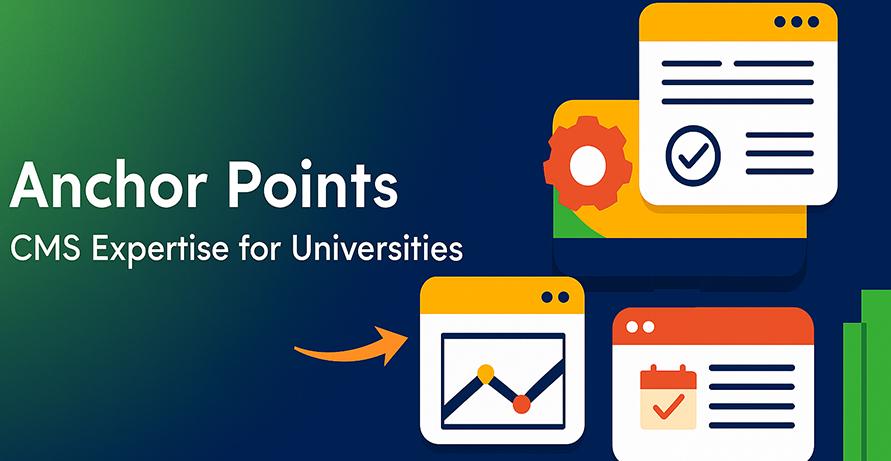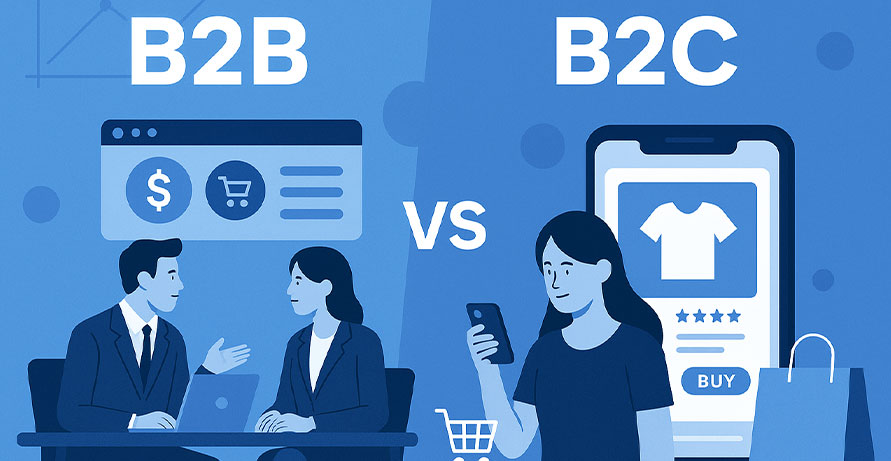The Best CMS for University Websites: A Smart Comparison for 2025

In 2025, higher education institutions are more digitally mature than ever. Yet many remain encumbered by outdated or poorly integrated content management systems. As universities race to meet accessibility mandates, student experience demands, and governance needs, selecting the right CMS has never been more critical. This blog explores the strengths and trade-offs of leading platforms like Drupal, WordPress, Sitecore, and emerging Headless CMS options, with insights drawn from Anchor Points' firsthand experience helping universities modernize their web ecosystems. The goal is to guide IT leaders and digital strategists in making a sustainable, scalable CMS decision.
The New Role of University Websites
University websites are no longer static marketing tools. They are multifaceted digital campuses that must serve prospective students, enrolled learners, faculty, alumni, and administrative staff all at once. In our work with educational institutions at Anchor Points, we've consistently seen one challenge rise above the rest: managing content at scale in a way that's accessible, secure, adaptable, and maintainable. The right CMS isn't just a tech decision; it's a long-term investment in digital sustainability.
Drupal: Built for Flexibility and Governance
Drupal remains a favorite among top-tier research universities, and for good reason. It's not only the platform of choice for institutions like MIT and the University of Oxford, but it also offers unmatched flexibility when it comes to structured content modeling, multilingual support, and role-based editorial workflows. For schools with complex internal governance, where departments want autonomy but central marketing needs brand consistency, Drupal excels. Its robust API support also makes it ideal for integrating with student information systems, LMS platforms like Canvas or Moodle, and authentication services like Shibboleth. At Anchor Points, we’ve architected multi-site Drupal environments that allow marketing teams to maintain control while enabling academic departments to manage their own domains. It’s powerful, but it requires a development-savvy team and proper governance planning from the outset.
WordPress: Empowering Non-Technical Editors
WordPress, in contrast, is still widely used across liberal arts colleges and smaller institutions that prioritize ease of use and rapid deployment. Schools like Sarah Lawrence College and Vassar have embraced WordPress to empower non-technical editors to create and update content independently. From our experience with university clients, this accessibility of editing often outweighs the platform’s structural limitations. However, scaling WordPress across a multi-department ecosystem introduces governance issues unless a strong theme and plugin strategy is in place. At Anchor Points, we help mitigate these risks by building custom blocks, tightening plugin controls, and implementing editorial training that ensures compliance with accessibility and security standards.
Sitecore: Enterprise-Level Power at a Cost
Sitecore enters the conversation as a high-end enterprise CMS favored by universities with deep pockets and complex marketing needs. We’ve seen Sitecore deployments at universities that rely heavily on personalization, CRM integration, and behavioral analytics to guide prospective student journeys. Its .NET foundation appeals to IT departments in institutions already running Microsoft ecosystems. Yet from our audits, many schools find themselves locked into costly maintenance cycles and underutilized features. Sitecore’s capabilities shine when properly configured, but the time-to-value can be slow unless there’s clarity of vision and internal ownership. That’s where our CMS selection consulting helps ensure clients don’t overinvest in platforms that outscale their operational reality.
Headless CMS: Decoupled and Future-Ready
Over the past two years, Headless CMS solutions have emerged as serious contenders in the higher ed landscape. Platforms like Strapi, Contentful, and Sanity offer a decoupled architecture that separates backend content from the frontend display. This enables institutions to deliver content seamlessly to multiple channels such as web, mobile, in-campus displays, and voice assistants. We’ve supported universities adopting headless models for building mobile student portals and dynamic course catalogs, particularly where frontend teams want the freedom to use React, Vue, or Next.js. But the trade-off is clear. While headless offers future-proofing and performance, it demands a more mature development workflow and a well-thought-out content model. Without that foundation, editorial teams can quickly become overwhelmed. That’s why Anchor Points provides both architectural planning and editorial system design to make headless CMS projects sustainable.
Choosing for Operational Fit, Not Hype
It’s clear that institutions often struggle when their CMS decisions are driven purely by procurement or vendor reputation rather than operational fit. Universities must assess not only what a CMS can do technically but also how well it aligns with their internal skill sets, publishing needs, and long-term vision. We've seen colleges invest heavily in platforms they barely use or underfund their implementation and end up with a CMS that becomes a liability within two years.
Anchor Points’ Core Insights
From our experience modernizing higher education websites, three insights stand out. First, accessibility must be baked in, not bolted on. Second, editorial autonomy and brand control must be balanced through smart governance. Third, longevity depends on choosing a CMS that fits today but scales for tomorrow. At Anchor Points, we help institutions navigate these decisions through CMS audits, platform migrations, accessibility reviews, and training programs tailored to university environments.
Final Thoughts: Plan for the Future
If your institution is reassessing its digital infrastructure for 2025 and beyond, the CMS you choose today will define how agile, inclusive, and future-ready your web presence becomes. Let Anchor Points help you make the right choice technically, strategically, and sustainably.








